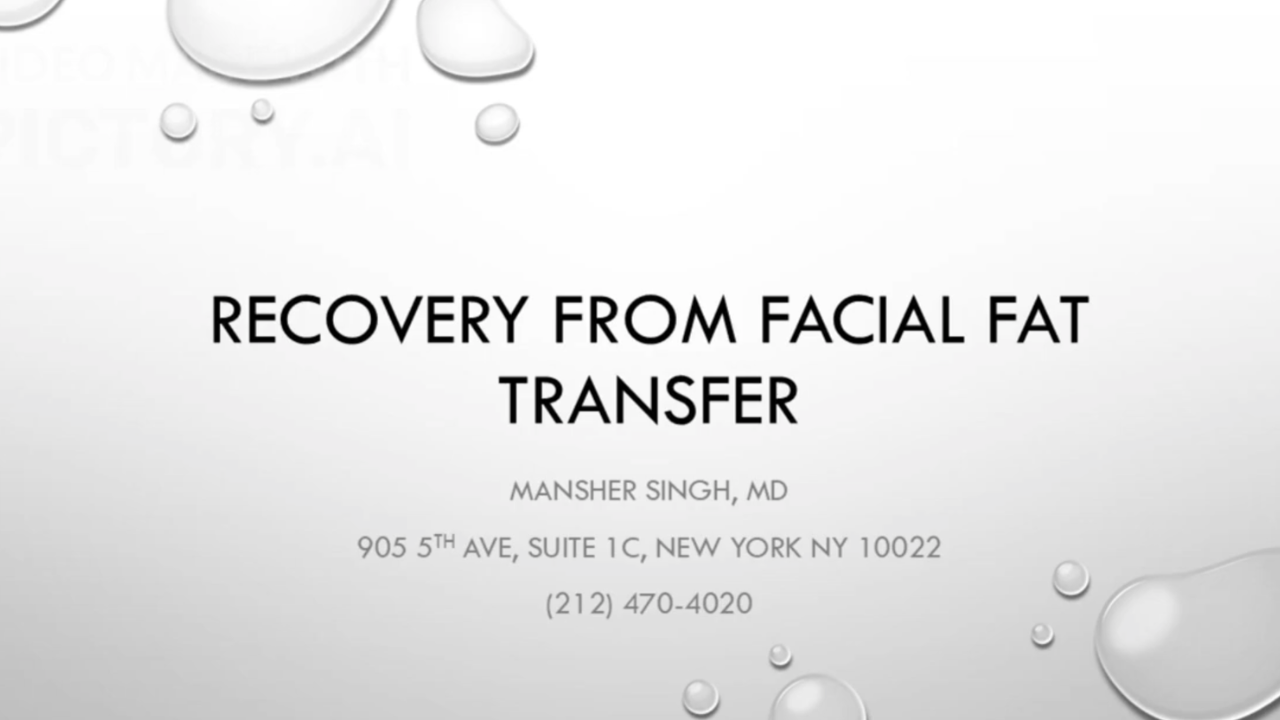
Facial fat transfer—also known as fat grafting or facial fat rejuvenation—is one of the most natural and long-lasting ways to restore youthful volume to the face. Whether performed alone or in combination with a facelift or eyelid surgery (blepharoplasty), it offers subtle yet powerful rejuvenation by using your own fat to replenish areas of hollowness and contour loss.
But what does the recovery process really look like? Understanding each stage of healing helps set clear expectations and ensures a smoother, more confident experience.
The First Week: Swelling, Patience, and Early Healing
After surgery, you’ll notice swelling and mild oozing—especially around the eyes for the first 24–48 hours. This is completely normal and self-limiting. Since no sutures are used in facial fat transfer, the initial recovery is quite comfortable.
Dr. Mansher Singh reminds his patients that this early phase often brings anxiety, but it’s a temporary stage. Roughly 30% of the transferred fat is naturally reabsorbed by the body, while the rest integrates permanently into the facial tissues, creating long-lasting, soft volume.
The First Month: Visible Improvement and Confidence Returns
Within two weeks, most patients can safely apply makeup and resume social activities. Swelling steadily improves every week, and by the one-month mark, results start to look smoother and more natural. The restored contours begin to shine through, giving the face a refreshed, rejuvenated appearance.
Months Two to Twelve: Refinement and Final Results
By the three-month point, the majority of patients are delighted with their outcome. However, it’s important to understand that final results can take up to one year, as residual swelling continues to subside and fat settles fully into place.
Healing is highly individualized—each patient’s body integrates fat differently. One side of the face may appear slightly more swollen or bruised than the other, but these differences always even out with time.
Why Trust the Process
Recovery from facial fat transfer requires patience, self-care, and trust in your surgeon’s expertise. Every face is naturally asymmetric due to bone structure variations, and while fat transfer beautifully restores volume, it doesn’t change underlying bone anatomy. Dr. Singh emphasizes the importance of focusing on the overall transformation, not moment-to-moment changes during recovery.
Key Takeaways
- Expect moderate swelling and possible oozing for the first few days.
- Makeup can typically be applied after two weeks.
- 30% of the fat may naturally absorb—this is expected and normal.
- Noticeable improvement starts within one month.
- Final results appear gradually over 6–12 months.
- Healing is unique—avoid comparing your progress to others.
Considering Facial Fat Transfer in New York City?
Dr. Mansher Singh, Triple Board-Certified Facial Plastic Surgeon, specializes in advanced facial fat transfer, deep plane facelift, and blepharoplasty procedures in Manhattan. His natural approach, meticulous technique, and personalized aftercare have made him one of the most trusted names in aesthetic facial surgery.
Schedule Your Consultation
Ready to restore youthful volume and rejuvenate your face? Book a private consultation with Dr. Mansher Singh today and discover your personalized plan for facial fat transfer recovery and results.




